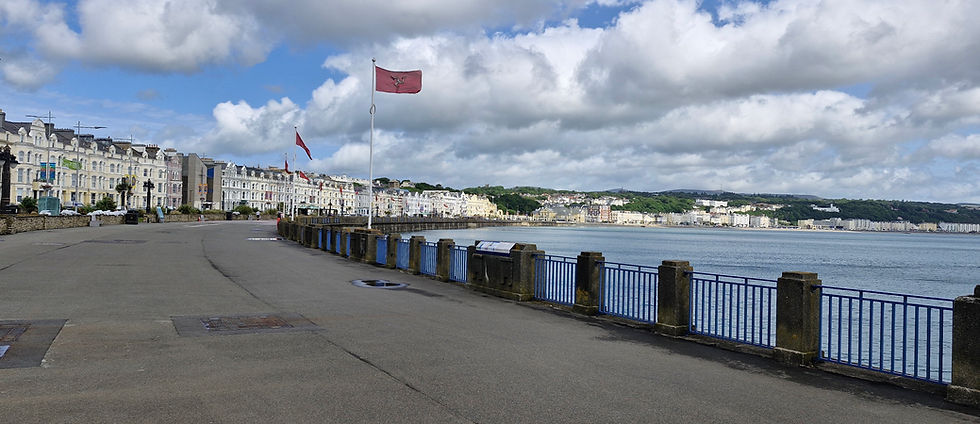Chambers at Large in Kildare, the Japanese Gardens, the National Stud and the Curragh
- Amelia Chambers
- Jul 21, 2021
- 4 min read
The town of Kildare in the county of the same name is not the county town (which is Naas) and certainly not the county’s biggest, which is Newbridge.

Kildare, arguably the home of Irish racing, may be seen as a busy village, built around a crossroads, a square, St Brigid’s Cathedral and Round Tower.

To my dismay cathedral and tower were closed due to Covid, but The Silken Thomas, the pub in which I stayed, was open, with my room ready. It is a welcoming inn offering top quality B&B accommodation, fine foods, (including the best breakfast menu and dessert menu I have seen in years) and an excellent array of beers and wines. Whilst staying there for two nights I decided to delve into the history of the man after whom the establishment is named.

Lord Thomas Fitzgerald, 10th Earl of Kildare, was given the nickname Silken Thomas as he had a penchant for rich clothing and silken banners, not because, as I initially suspected, after the silks worn by jockeys. In the early sixteenth century, at the tender age of twenty one, Thomas was told his father had been executed in the Tower of London. He sought vengeance by declaring King Henry VIII his foe and mounted a rebellion. Unfortunately news of his father’s beheading was false, but having made an enemy of the king, Silken Thomas and his five uncles were later beheaded at Tyburn, in the centre of London. False news, it seems, is NOT a new phenomenon at all!

A tapestry of Silken Thomas and his nemesis, Henry VIII, holds pride of place on the wall in the bar, but when I asked who created the piece no one seemed to know. If anyone reading this has any information on this wonderful work of art, I would love to know of its origins.

The main reason I wanted to visit the town of Kildare was to go to the Japanese Gardens and National Stud, which are about three kilometres outside of the town and the brainchild of William Hall Walker, who was fascinated with Eastern culture, sport and astrology.

The Japanese Gardens are a tranquil area of beautiful flora, waters, a red, wooden bridge and a tea house.

Stepping stones, sculptures, tunnels and steep steps are entwined within the trees and flowers and I had to be careful where I walked.

A Zen garden is at the entrance where I was I should sit in meditation for twenty minutes a day, unless I was too busy; then I should sit for an hour!

When I do have spare time I like going to the races. I enjoy the flurry of excitement, the occasional flutter and a G&T whilst watching a race, but my knowledge of racing ends at the tote. I therefore took the guided tour of the National Stud, which was FREE, and learned a few salient facts.

The stud is home to stallions, mares and foals and is a lucrative business when the cost of a stallion covering a mare can be as much as 120,000 euros.

I was a little surprised to find the stallions were much smaller than I imagined, but it was quite obvious they were well looked after, their paddocks and stalls in exemplary condition and my guide spoke enthusiastically about the stallions who are either retired or actively breeding.

One of the stallions, Tommy, is “a teaser”. It is is job to see if the dam is “interested” in mating when she comes into season. If she shows any “interest” in him, then she will meet the stallion who will mount her. Thankfully Tommy is not denied a dam after all his “teasing” and about three hundred foals are born at the stud each year. All have the same birthday, my own, January 1st, and breeding begins around Valentine’s Day.

I remember seeing an actual mating when I was younger. It is violent, almost savage, and the mare and stallion can be injured, not to mention the staff who keep a keen eye on the procedure, which is videoed so that owners can be sure they are getting, what they are paying a king’s ransom for and there are absolutely no guarantees the foal will be a winner.

The construction of their stalls, with rectangular windows at the top of the walls, ensures the horses are exposed to a celestial influence, and William Hall Walker had astrological charts produced for each new foal. Although this may be done today by some owners, (who knows), more scientific records of dams, sires and offspring are kept and shown on plaques outside of their stalls.

I drove back to The Silken Thomas via the Curragh, home to the Irish Derby held in June and, on that particular afternoon, a flock of sheep. I berated myself for not asking my guide for a tip for next year’s Irish Derby or even Cheltenham, but there was nothing to stop him delivering fake news. Maybe I should do like William Walker Hall and consult the stars!





Comments